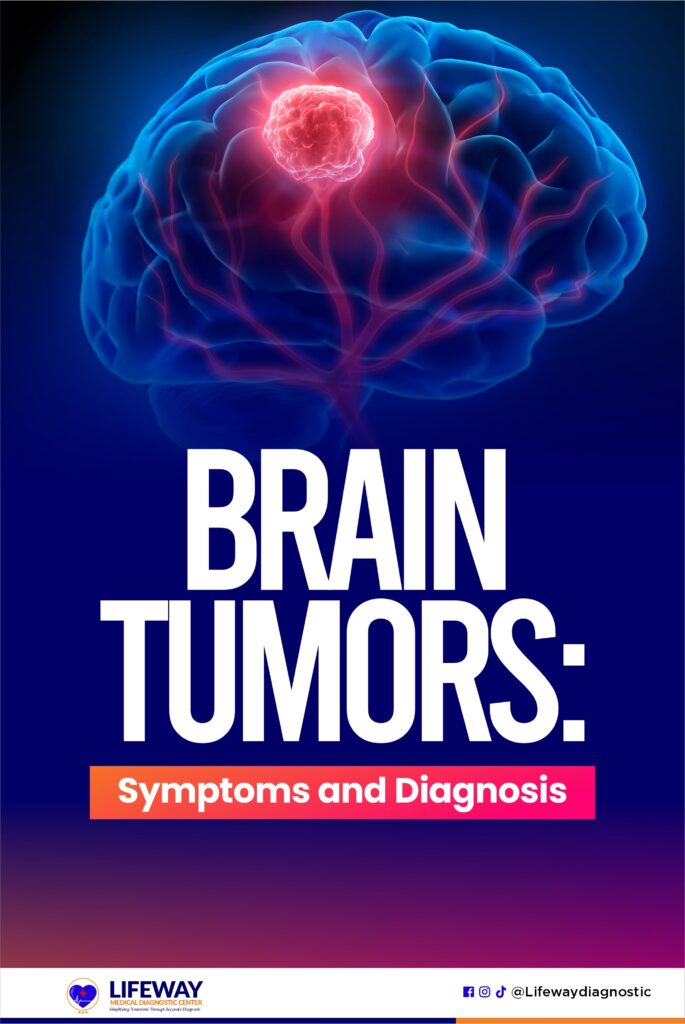Brain tumors can be life-threatening if left unchecked. The specific symptoms depend on the size, type, and location of the tumor.

Diagnosis of brain tumors involves various imaging tests, neurological exams, and sometimes a biopsy. The causes of tumors may be linked to genetic conditions, exposure to radiation, or other environmental factors.
Brain tumors are classified into different grades (I-IV) based on how abnormal the tumor cells appear and how quickly they are growing.
Consulting a neurologist or neurosurgeon is recommended if a tumor is suspected.
What is a Brain Tumor?
A brain tumor is an abnormal growth or mass of cells that develops within the brain or surrounding tissues of the central nervous system.
It can be either benign (non-cancerous) or malignant (cancerous). Benign, non-cancerous tumors typically grow slowly, while malignant tumors are cancerous and can grow and spread quickly.
Early symptoms may be subtle and non-specific, making diagnosis challenging.
Brain tumors can originate from the brain’s cells (primary brain tumors) or spread from cancers elsewhere in the body (secondary/metastatic brain tumors).
Types of Brain Tumors
The most common types of brain tumors and their typical prognosis are:
1. Gliomas
Gliomas are the most common primary brain tumors, originating from glial cells. Prognosis varies widely – low-grade gliomas have a 5-year survival of 50-90%, while high-grade glioblastomas have only 5-10% 5-year survival.
2. Meningiomas
Meningiomas are usually slow-growing, non-cancerous brain tumors arising from the meninges, with 5-year survival over 90% for low-grade cases.
3. Pituitary adenomas
Pituitary adenomas are mostly non-cancerous tumors originating in the pituitary gland, with a favorable 5-year survival of over 90%. However, some can be aggressive.
4. Vestibular schwannomas
Vestibular Schwannomas also known as Acoustic neuromas are slow-growing, non-cancerous tumors that develop on the auditory nerve. Prognosis is generally excellent, with 5-year survival approaching 100%.
5. Medulloblastomas
Medulloblastomas are fast-growing, cancerous tumors that mainly affect children, originating in the cerebellum. Its 5-year survival rates are around 60-80%.
Brain Tumor Symptoms
The symptoms of a tumor depend on the size, type, and location of the tumor. The following are the
- Neurological changes – Depending on the tumor’s location, symptoms can include vision problems, speech difficulties, memory/cognitive issues, coordination problems, and changes in personality or behavior.
- Nausea and vomiting – Increased pressure within the skull from the growing tumor can cause nausea and vomiting.
- Headaches – The headaches may be persistent, or worse by coughing/sneezing.
- Seizures – Brain tumors can cause seizures, especially if the tumor is located in the cerebral cortex.
- Fatigue – Brain tumor patients often experience extreme fatigue and drowsiness.
- Numbness or tingling in the arms or legs
- Confusion or disorientation
Diagnosis of Brain Tumors
The combination of these various diagnostic tests, along with a thorough clinical history and physical examination, allows accurate diagnosis of brain tumors
a. MRI Scan
MRI (Magnetic Resonance Imaging) scans provide highly detailed, cross-sectional images of the brain, allowing precise identification of the tumor’s location, size, and characteristics.
This imaging is considered the gold standard for brain tumor imaging due to its excellent soft tissue contrast.
b. CT Scan
CT (Computed Tomography) scans use X-rays to create three-dimensional, cross-sectional images of the brain. This can quickly identify hemorrhage, and bone/skull abnormalities associated with a tumor.
You can also read: Where to get a CT Scan near me
c. PET Scan
PET (Positron Emission Tomography) scan uses a radioactive tracer to highlight areas of unusual metabolic activity, which can indicate a tumor. It can help differentiate between active tumor tissue and areas of scarring.
d. Electroencephalogram (EEG)
EEG uses electrodes to measure the electrical activity of the brain.
It can detect abnormal brain wave patterns that may indicate the presence of a brain tumor, especially if the tumor is located in the cerebral cortex.
e. Neurological tests
Tests like reflex checks, balance assessments, and vision/hearing exams can help localize the area of the brain affected by the tumor and identify any resulting neurological deficits.
f. Biopsy
If a tumor is found, a small sample may be removed surgically or with a needle biopsy for analysis.
Conclusion
The combination of clinical symptoms, physical exam, and advanced imaging techniques allows healthcare providers to accurately diagnose the presence, location, and characteristics of a brain tumor.
Early symptoms may be subtle and non-specific, making diagnosis challenging. The prognosis for brain tumors depends heavily on the specific type, grade, and location of the tumor, as well as the patient’s age and overall health.
Brain tumors can be life-threatening, so early detection and appropriate treatment are crucial.
